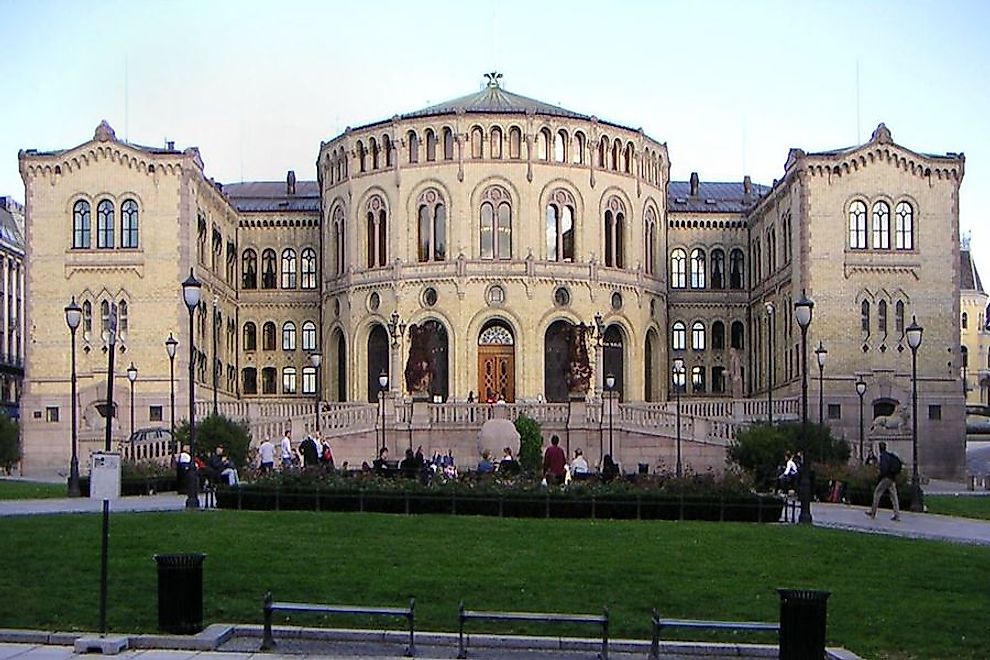What Type Of Government Does Norway Have?

The type of government system in Norway is a parliamentary constitutional monarchy, and the country is formally known as the Kingdom of Norway. The country got independence on June 7, 1905 when Norway declared the union with Sweden dissolved. The country has both the monarch and a prime minister. Norway’s political history began in the 8th century with the settlement of the Vikings who were ruled by local chieftains. The region’s first king was Olaf II Haraldsson, and he introduced Christianity to the Norwegians. From 1442 to 1814, the territory was ruled by Danish Kings until it became integrated with Sweden. After independence in 1905, the country formed a government under the Danish King Haakon VII. Norway was occupied by the Nazi Germany during the WWII, but the nation recovered quickly due to the expansion of its economy.
The Monarchy Of Norway
Norway has a monarch as head of state, and the present monarch is King Harald V. The position is passed down through family generations. The King officially opens the Norwegian Parliament. He makes state visits to other nations and also hosts foreign heads of states. Other duties carried out by the monarch include ratifying royal resolutions and laws and chairing the Council of State. The monarch is the Commander-in-Chief of the nation’s armed forces, General in the Army and Air Forces, and Admiral in the Navy. He appoints the state council or the cabinet, which has to be approved by the parliament.
The Prime Minister Of Norway
The country’s prime minister serves as the Head of Government. The position is provided for in the 1814 Constitution. The government is created by the party with the majority seats in Parliament, but it can also be formed by a coalition of parties. Presently, the nation’s prime minister is Erna Solberg, leader of the Conservative Party. The last elections were held in September 2013, and the next one will be in September 2017.
The Legislative Branch Of The Government Of Norway
Norway has a unicameral parliamentary system, and the nation’s Constitution stipulates that Parliamentary elections are to be held at four-year intervals. Norway’s Parliament is referred to as the Storting, and it holds sessions in the Storting building in Oslo. 169 members elected through party-list proportional representation sit in the Parliament. The last elections were held in 2013, and the Center-Right Coalition won 54.0% of the votes and Red-Green Coalition 40.6% of the votes. The Center-Right Coalition won 96 seats and Red-Green Coalition 72 seats. The Storting represents Norwegians and their interests. The chamber also decides on whether a particular issue warrants for a referendum or not. Other functions of the Storting include approving new legislation and repealing existing ones, approving the proposed budget, authorizing revenues and expenditure, monitoring the actions of the government, and debating foreign policy concerns.
The Judicial Branch Of The Government Of Norway
The Supreme Court is on top of the country’s legal system, and it is made up of the chief justice and 18 associate justices. The justices are appointed by the monarch on the recommendation of the Judicial Appointments Board. The retirement age justice is mandatory at age 70. The Supreme Court makes final decisions on appeals from the lower courts and sits in Oslo. Under the Supreme Court are six Courts of Appeal presided over by a senior judge president in addition to appellate judges. 88 district courts spread across the nation serve as the first instance courts. There are Conciliation boards in every municipality which listen and provide a verdict to civil disputes. Special courts and tribunals listen to particular issues such as land and industrial disputes.







